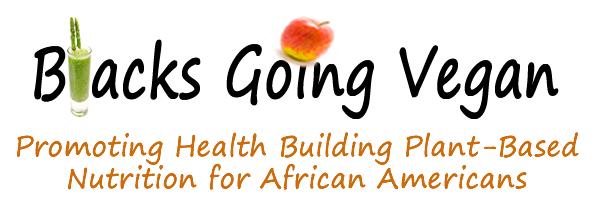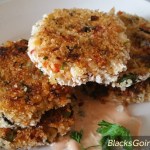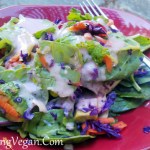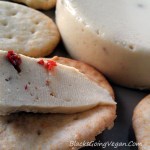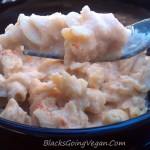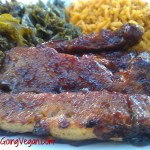Unclog Your Arteries and Control Blood Sugar by Reducing Fat Intake
Were you aware that too much dietary fat not only clogs arteries and veins and increases risks of strokes and heart attacks, it also creates a situation in the body where your cells cannot access the glucose produced from food. So all the glucose so it sits around in your bloodstream and creates elevated blood sugar levels, making you pre-diabetic or diabetic.
Several years ago, the husband of my good friends from college was found dead in his office. A small business owner, he was working alone on a Sunday, trying to catch up on paperwork. When he didn’t return home as scheduled for dinner, and no one could reach him by phone, my friend and her brother drove to the worksite. His truck was there, and they found him inside at his desk with the phone in his hand. He was dead from a massive heart attack at the age of 45. It was assumed that he was attempting to call 911, but didn’t have enough time.
With all the information about health and nutrition available on the web, one would think we all know what causes heart attacks and what we can do to prevent them. However, every year more than 720,000 Americans have a heart attack. Of these, 515,000 are a first heart attack and 205,000 happen in people who have already had a heart attack.(CDC) The worst part is that the pain, suffering, grief and financial ramifications associated with these grim statistics are entirely preventable. No one should ever die of a heart attack before they have lived a long and happy life.
So What DOES Cause Heart Attacks?
Heart attacks are caused by atherosclerosis (also known as clogged arteries). When you have atherosclerosis your arteries are clogged by cholesterol-filled fatty pustules and abscesses called plaques. Over time, scars form under the abscesses, and the arteries harden with fibrous scar tissue. Narrowed arteries increases the pressure needed to circulate blood which results in elevated blood pressure.
When one of the abscesses rupture, pus and blood spill out into your artery. If a clot forms it can block blood flow to the heart. When heart muscles cannot get enough blood the cells in this vital organ begin to die. If the area of dead heart muscle cells is large enough, your heart will not be able to beat normally. If your heart does not beat normally it cannot send rich red blood full of oxygen and nutrients through your body. If your body and brain fails to get an adequate blood supply, you will die.
Deaths from Heart Disease Vary by Ethnicity
Heart disease is the leading cause of death for people of most ethnicities in the United States, including African Americans, Hispanics, and whites. However, for American Indians or Alaska Natives and Asians or Pacific Islanders, heart disease is second only to cancer. The chart below shows the percentages of all deaths caused by heart disease in 2008, listed by ethnicity.
| Race of Ethnic Group | % of Deaths |
|---|---|
| Race of Ethnic Group | % of Deaths |
| African Americans | 24.5 |
| American Indians or Alaska Natives | 18.0 |
| Asians or Pacific Islanders | 23.2 |
| Latinos or Hispanic | 20.8 |
| Whites | 25.1 |
| All | 25.0 |
Why Are Blacks Disproportionately Affected by Heart Disease?
Since developing this page and the associated Facebook page, I’ve been in conversation with hundreds of black men and women about their health and nutrition. Many are scared half to death because they’ve been diagnosed with heart problems, diabetes or pre-diabetes. Several have explained how these afflictions seem to “run in my family” and rattle off how many other siblings or relatives suffer the same plight.
Though there are genetic markers for certain diseases, unless you are born with a congenital heart defect, heart disease and its complications are entirely preventable by changing what you put in your mouth.
Think about it… most of us eat what our parents and grandparents gave as to eat as we grew up. Fried chicken, fried pork chops, overcooked greens dripping with bacon fat or smoked pork, eggs scrambled in butter with a side of ham, hot links and hot dogs, rich and cheesy macaroni and cheese. We go through life eating the same things, prepared the same way because that is what we know. Few of us ever stop to question the connection between the health problems prevalent in our families and what we all eat.
Developing health problems such as hypertension, heart disease, and diabetes we automatically think that it must be genetic and nothing can be done about it, because other family members have the same problems. You may resign yourself to taking medication for the rest of your life, just like your other relatives do, but you have the power to change that.
When we become conscious of the fact that the problem is not family genes, but family eating habits we take control of our health. Changing your eating habits can reverse many diseases, and eliminate or reduce the need for medications. What to eat is explained here, with lots of healthy plant-based recipes that LOOK and TASTE like what you’re used to here.
What Causes a Build-Up of Fat in Arteries?
The fatty abscesses that clog your arteries are caused by ingesting cholesterol-containing animal foods – meat, chicken, fish, milk, cheese, butter and eggs. We’ve known this since 1913 when Russian pathologists fed cholesterol from egg yolks to rabbits and produced atherosclerosis in their arteries. Nothing else that we normally eat causes atherosclerosis. Saturated fat usually travels with cholesterol, but it does not clog rabbit or human arteries, which is why coconut oil, though it contains saturated fat, is considered a heart healthy fat.
Cholesterol in the diet may activate an inflammatory response that leads to atherosclerosis. This is an area of active research, but we do know with certainty that when people STOP eating cholesterol-containing foods, the fatty buildup and pustules on their arteries clears up and their arteries become healthy and clear again. If a picture is worth 1000 words, look at the healthy vs. blocked arteries below.
This is new information for many people, and it conflicts with their beliefs about food and how they currently eat. When new information conflicts with our beliefs, the first reaction is usually to reject the new information and seek out information that confirms what we currently believe. The internet is notorious for dispensing errant and incorrect information to the public which causes a great deal of confusion.
For example, if you look at the Wikipedia page on atherosclerosis, you will see a confusing list of “risk factors” in the Causes section. According to Dr. William Roberts, Executive Director of Baylor University’s Heart and Vascular Institute and Editor in Chief of The American Journal of Cardiology, NONE of those things CAUSE atherosclerosis. The only cause of artery-clogging atherosclerosis is cholesterol in the diet.
Some of the Biggest Internet Myths About Atherosclerosis
- Sugar and simple carbohydrates (though certainly not the best foods to ingest on a regular basis), do not cause atherosclerosis. The more cakes and cookies you eat the more atherosclerosis you will have simply because the cholesterol in butter and eggs in baked goods clogs your arteries. Refined sugar should be avoided because it has no nutritional value and adds unnecessary calories to the diet. Fruits and vegetables are loaded with fiber and nutrients, they do not contain cholesterol, nor do they clog your arteries.
- Trans fats do not clog your arteries, the problem is cholesterol. Animal products contain trans fats and they are created by processing oils to make solid fats such as margarine. Avoid trans fats because they also have zero nutritional value, not because they clog your arteries.
- Obesity does not clog arteries and weight loss does not unclog arteries. In fact, losing weight on a high cholesterol/high animal protein/low carb diet actually causes atherosclerosis. We all know skinny people who have had heart attacks in their 30s and 40s. If you focus on unclogging your arteries with a cholesterol-free whole food plant-based diet, healthy weight loss will be a welcome bonus.
- Physical activity has many health benefits, but lack of exercise does not clog arteries, and exercise does not unclog them. We all know fit people who exercise regularly but have had heart attacks.
- Smoking does not clog arteries, but if you smoke you should definitely quit. If your arteries are already clogged, smoking exacerbates the situation.
- Stress can constrict and narrow your arteries, but it does not clog them. The high cholesterol comfort foods that we tend to eat under stress will clog arteries but not stress itself. If your arteries are already clogged stress can make a bad situation worse. Reducing stress improves your quality of life, but it will not unclog your arteries. You have to change your eating habits.
Let’s say that again – the only thing you have to do to prevent a heart attack is to stop eating cholesterol containing foods. Yes, your body does needs cholesterol, but you make all the cholesterol that your body needs. Your blood cholesterol levels are a combination of what you eat and what your body makes. When you stop eating cholesterol containing foods your blood cholesterol levels will drop and your arteries will begin to heal, allowing blood to circulate freely.
You can also reduce your blood cholesterol levels with medications. Statin medications block cholesterol production by your body. These medications will lower blood cholesterol levels but the effect on reversing atherosclerosis is variable. High dose, long term statin treatment may decrease plaque volume.
Statin drugs may also stabilize plaques and prevent them from rupturing. The problem with high-dose, long-term treatment with any medication is side effects. FDA warns that statins may cause diabetes, memory loss and muscle damage. Discuss these risks in detail with your doctor to determine which course of treatment is best for you.
If you are now wondering what you would eat if you did not eat any artery-clogging meat, chicken, fish, eggs, milk, butter or cheese for lunch, try this vegan version of the French staple Salade Nicoise. It’s packed with nutrients, delicious to eat, and easy to make.

- 1-1/2 pounds of new or baby red potatoes
- 1 8 oz package of grape tomatoes
- ½ pound young green beans [french haricot verts if you can find them)
- ½ yellow bell pepper
- ½ cup puy lentils [sub green lentils]
- ½ cucumber
- ½ red onion
- 1 cup Kalamata seedless black olives
- 1 8-10 oz jar of artichoke hearts in oil
- 4 Tbsp olive oil
- 1 Tbsp white wine vinegar
- 1 teaspoon Dijon mustard
- 1 small bunch of fresh basil
- Salt and pepper to taste
- Heat up some salted water in a 3 quart pot, and 2 smaller ones.
- When the water is boiling cook potatoes in the large pot for 15-20 mins until tender. Cook lentils in one of the smaller saucepan for 10 mins until cooked. Cook green beans for 10 mins in the other smaller saucepan for 10 mins. Lentils and green beans should be cooked but still have a bite. When cooked drain each separately and leave to cool.
- In the meantime prepare the rest of the vegetables. Cut baby plum tomatoes in half. Cut yellow pepper and red onion in thin slices or a small dice. Cut artichoke hearts in quarters. Cut cucumber in medium dice.
- Place cooled lentils, potatoes and beans in a large salad bowl. Add tomatoes, pepper, cucumber, onion, olives and artichokes followed by finely chopped basil.
- Make vinaigrette in a separate bowl by mixing mustard, olive oil and vinegar until you have a thick dressing.
- Toss salad and dressing together. Season to taste.
- Leave covered in the fridge for two hours to overnight. Remove from refrigerator 30 minutes before serving.
Category: Veganism and African Americans
